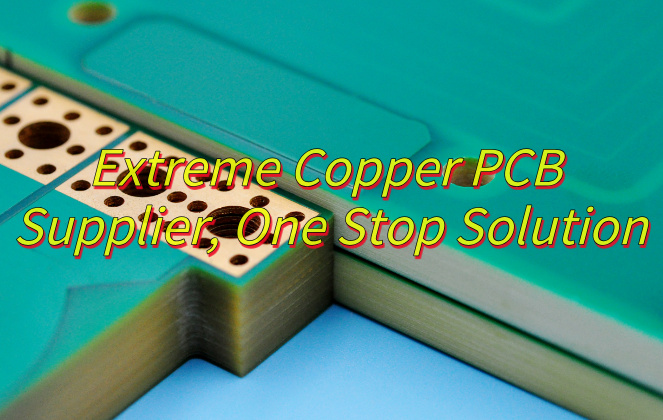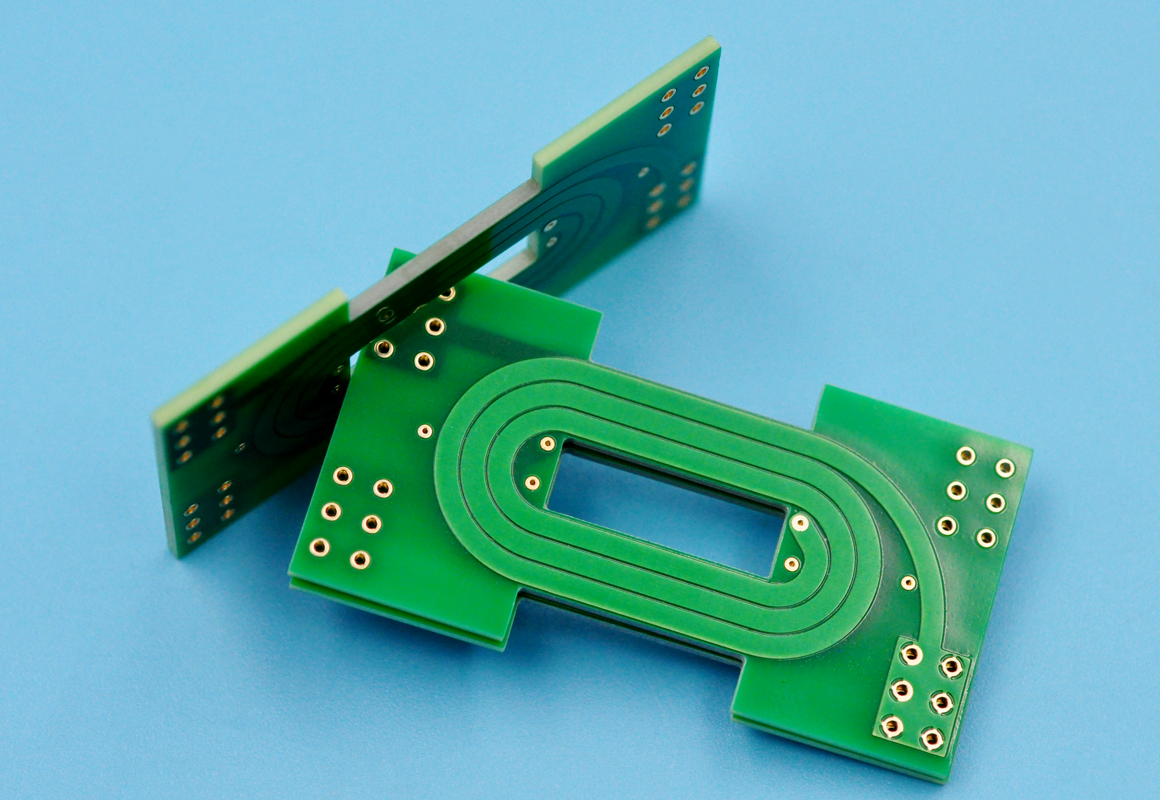Looking for extreme copper PCB solutions? This guide covers specs, benefits, applications and design guidelines for extreme copper PCB.
Are you troubled with these problems?
- Frequent PCB failures in high-current scenarios?
- Is the cost of cooling solutions out of control?
- Half the lifespan in harsh environments?
EBest Circuit (Best Technology) can provide solutions:
- 4-20oz stepped copper layer: Minimum trace width of 0.8mm achieves 600A continuous current.
- 3D heat dissipation topology: 0.5mm microvia clusters + copper pillar soldering, reducing thermal resistance by 40%.
- Environmentally adaptable coating: Passed 72-hour dual 85 test, IP67 protection level.
Welcome to contact us if you have any request for heavy copper PCB: sales@bestpcbs.com.
What Is Extreme Copper PCB?
An extreme copper PCB is a special type of printed circuit board that uses extra-thick copper layers, typically starting from 5 oz/ftÂČ (about 175 microns) and going up to 20 oz/ftÂČ or even higher. These thick copper layers are far greater than the standard 1 oz or 2 oz copper found in most PCBs. The goal of using extreme copper is to handle very high current, manage intense heat, and ensure mechanical durability in harsh environments.
Unlike standard copper PCB boards, extreme copper PCBs can safely conduct large currents without overheating, thanks to the increased cross-sectional area of the copper traces. In addition, the thick copper enhances the board’s thermal conductivity and mechanical strength, making it highly reliable for long-term use in demanding applications.

Extreme Copper PCB Specification
| Parameter | Specification |
| Copper Thickness | 5 oz/ftÂČ to 20 oz/ftÂČ (175 ”m to 700 ”m) |
| Base Material | High TG FR4, Polyimide, Metal Core (Aluminum or Copper), Ceramic |
| Board Thickness | 1.6 mm to 6.0 mm (customizable) |
| Minimum Trace Width/Spacing | 0.5 mm / 0.5 mm (may vary based on copper thickness and design) |
| Maximum Current Capacity | Up to 100 Amps or more, depending on trace width and copper weight |
| Thermal Conductivity | High, due to thick copper and thermal vias (1.0â3.0 W/m·K for standard FR4) |
| Surface Finish Options | ENIG (Immersion Gold), HASL, OSP, Immersion Silver, Hard Gold |
| Drill Hole Size | Minimum 0.3 mm (12 mil), larger holes recommended for thick boards |
| Layer Count | 1 to 6 layers (commonly 1â2 layers for extreme copper) |
| Impedance Control | Possible with careful design; may be challenging due to thick copper |
| Solder Mask | High-temperature resistant (e.g., green, black, white, custom colors) |
| Plating Type | Heavy copper plating for traces, pads, and through-holes |
| Thermal Via Support | Yes â often required for heat dissipation in multilayer or dense designs |
| Standards Compliance | IPC-6012 Class 2/3, RoHS, UL94-V0 flame retardant rating |
What Are Benefits of Extreme Copper PCB?
Breaking Current-Carrying Limits
- A single 4oz (140ÎŒm) copper layer can carry 50A, four times the current of a conventional 1oz PCB.
- Multi-layer stacking solutions (such as a 2oz + 4oz combination) support high-current transmission exceeding 1000A.
Reduced System Temperature Rise Risk
- Tests show that under the same load, the temperature rise of a 4oz copper plate is 40% lower than that of a 1oz copper plate.
- Reduced heat sink size enables device miniaturization.
Extended Product Lifecycle
- The fatigue strength of the copper layer is increased by 60%, preventing circuit cracking caused by high-frequency vibration.
- Salt spray testing shows corrosion resistance is three times that of conventional PCBs.
Simplified System Design Complexity
- Multiple low-voltage circuit boards can be combined into a single board, reducing connectors and wiring harnesses.
- Supports integrated power/signal design, reducing EMI interference.
Lifecycle Cost Advantages
- Although the initial cost increases by 20%, the failure rate decreases by 70%.
- A five-year TCO (Total Cost of Ownership) calculation shows a 35% reduction in maintenance costs.

What Are Applications of Extreme Copper PCB?
Applications of Extreme Copper PCB
- Power Electronicsâ Used in power supplies, converters, and inverters to handle high current and heat.
- Automotive Systemsâ Ideal for electric vehicle chargers, battery management systems, and motor controllers.
- Industrial Equipmentâ Applied in welding machines, heavy machinery, and high-power control systems.
- Military and Aerospaceâ Used in radar systems, communication devices, and rugged electronics for harsh conditions.
- Renewable Energyâ Found in solar inverters and wind power controllers that require high reliability and heat resistance.
- Railway and Transportationâ Used in power control units and signaling systems that demand strong and durable PCBs.
- Medical Devicesâ Suitable for high-power medical equipment requiring stable and safe operation.
Extreme Heavy Copper PCB Design Guide
1. Material Selection
- Base Material: Use high-Tg (â„180°C) FR4 or ceramic-filled PTFE for thermal stability.
- Copper Foil: Specify 6-10 oz (210-350”m) rolled annealed copper for flexibility and adhesion.
- Metal Core: Integrate aluminum/copper substrates (e.g., 2mm thickness) for direct heat dissipation.
2. Layer Stackup Strategy
- Outer Layers: 6-10 oz copper for power/ground paths.
- Inner Layers: 2-4 oz copper for signals; add isolated power planes for high-current rails.
- Thermal Vias: Place 0.8-1.2mm diameter vias (â„3 oz plating) under hot components to connect outer/inner layers.
3. Trace Design Rules
- Calculate width using IPC-2221 (e.g., 10 oz copper = ~150A for 20mm trace at 10°C rise).
- Use 45° bends; avoid right angles to reduce impedance spikes.
- Thicken traces near connectors (e.g., 2x nominal width) to handle surge currents.
4. Thermal Management
- Fill unused areas with copper pours (â„70% coverage) tied to ground/power planes.
- Use embedded heat sinks (e.g., copper coins) under MOSFETs/IGBTs.
- For metal-core boards, bond components directly to the substrate with thermal epoxy.
5. Power Distribution
- Split power planes by voltage (e.g., 48V, 12V) to minimize noise.
- Place decoupling capacitors (e.g., 10”F ceramic) within 2mm of IC power pins.
- Widen battery-to-load paths (e.g., 50mm+ traces) to minimize IR drop.
6. Signal Integrity
- Keep high-speed traces (>100MHz) away from power zones (â„5mm gap).
- Adjust trace spacing to maintain 75-100Ω impedance despite thick copper.
- Use guard traces (grounded copper) around sensitive signals.
7. Manufacturing Compliance
- Specify âextreme heavy copperâ and âmetal-coreâ in design notes.
- Confirm minimum trace/space (â„10mil) and via drill sizes (â„0.5mm).
- Request differential etching and X-ray inspection for via plating quality.
8. Assembly Considerations
- Use high-temperature solder (e.g., SAC305) rated for 260°C reflow.
- Add soldermask dams between thick traces to prevent solder wicking.
- Test prototypes with 2x nominal current to validate thermal performance.
9. Validation & Testing
- Perform thermal imaging under max load to identify overheating zones.
- Use a microsection analysis to verify copper thickness and via plating integrity.
- Conduct HALT (Highly Accelerated Life Test) for thermal cycling (-40°C to +125°C).

Why Choose EBest Circuit (Best Technology) as Extreme Copper PCB Supplier?
Reasons why choose us as extreme copper PCB supplier:
- Certified Compliance (ISO 9001, UL, RoHS) – Mitigates regulatory risks and ensures products meet global standards for safety and environmental compliance.
- 19 Years of Heavy Copper PCB Manufacturing Experience – Quickly and flexibly handle the production of thick copper plates, speeding up production cyclesă
- 24-Hour Rapid Prototyping Delivery – Accelerates product development cycles, enabling faster time-to-market and competitive edge in high-demand industries.
- Stringent Quality Control with 100% Inspection – Eliminates hidden defects, reduces rework costs, and ensures reliability in high-current/thermal applications.
- Transparent Pricing with No Hidden Fees – Predictable budgeting and cost savings through upfront pricing models tailored to thick copper PCB specifications.
- Free DFM (Design for Manufacturability) Analysis – Optimizes PCB layouts to reduce material waste, lower production costs, and avoid late-stage design revisions.
- One-Stop Solution from Design to Delivery – Streamlines project management by consolidating prototyping, fabrication, and assembly under one roof.

Our Heavy Copper PCB Capabilities
| Base material | FR4/Aluminum |
| Copper thickness: | 4 OZ~10 OZ |
| Extreme Heavy Copper: | 20~200 OZ |
| Outline: | Routing, punching, V-Cut |
| Soldermask: | White/Black/Blue/Green/Red Oil |
| Surface finishing: | Immersion Gold, HASL, OSP |
| Max Panel size: | 580*480mm(22.8″*18.9″) |
How to Get A Quote For Extreme Copper PCB Project?
Basic structural parameters
- Number of layers required (single-sided/double-sided/4-20 layers)
- Finished product dimensions (length x width ± tolerance) and panelization plan
- Panel type (FR4 Tg 170°/aluminum substrate/ceramic substrate
- Target board thickness (0.8-6.0mm range)
Copper foil process specifications
- Copper thickness distribution (e.g., outer layer 4oz/inner layer 2oz)
- Special requirements (locally thickened copper block/embedded copper heat sink)
- Minimum trace width/spacing (e.g., 6oz copper thickness requires â„5.0mil)
Electrical performance requirements
- Current carrying capacity (e.g., continuous current â„200A @ 25°C)
- Impedance control requirements (differential pair impedance value and tolerance)
- Insulation withstand voltage rating (power frequency/DC withstand voltage)
Surface finish options
- Choose one of: ENIG/immersion tin/OSP
- Solder mask color (default green, other colors +20% fee)
- Silkscreen requirements (character height â„0.8mm)
Special process instructions
- Thick copper etching compensation solution (design documents required)
- Thermal via design (aperture diameter/pitch/filler material)
- Acceptance criteria (IPC-6012D) Class 2/3)
Required Documents
- Gerber (RS-274X format) + drill file.
- Stackup diagram (with copper thickness distribution).
- Impedance calculation table (if high-speed signals are involved).
Why choose EBest Circuit (Best Technology)?
- 19 Years of Thick Copper Expertise: Delivered over 50 million 4oz+ PCBs since 2006, a strategic supplier to Tesla and Huawei.
- Pricing Transparency: Vertically integrated supply chain, prices 30-40% lower than those of European and American manufacturers for comparable processes.
- Extreme Response: 24-hour emergency proofing, 72-hour first-part delivery (industry average: 7 days).
- Full Inspection Commitment: 100% AOI + Flying Probe Testing, CPK â„ 1.67, Failure Rate < 50 PPM.
- One-Stop Service: From design review to conformal coating to assembly and testing, complete management.
Welcome to contact us if you have any request for copper PCB: sales@bestpcbs.com.


